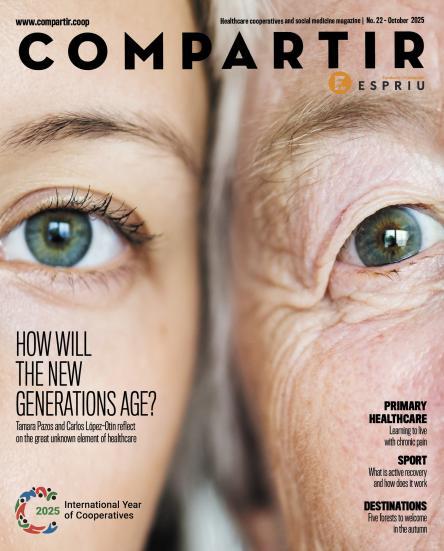
The importance of caring for the largest (and most fragile) organ: your skin
The skin is the body’s largest organ. It can regenerate itself; it is waterproof, resistant and flexible; it breathes and remains active 24 hours a day. But it is also vulnerable to many aggressions, both external and internal; therefore it is vital to make its care a top priority. Moisturising it and protecting it from ultraviolet rays are essential to help safeguard it.
The skin is the largest organ in the human body. It can weigh up to 10 kilos and it covers, approximately, a surface area equivalent to two metres. Additionally, it is a live, active organ that is constantly changing. As summarised by the Fundacion Piel Sana at the Spanish Dermatology and Venereology Academy (AEDV using its Spanish initials), the skin acts as a protector, a melanin producer, temperature regulator, vitamin D activator, detector of feelings and it is an aesthetic organ. However, it is also one of the organism’s most fragile and vulnerable parts, as it can be affected by external elements (the sun, aggressions, the environment…), internal elements (internal diseases) or by altercations created within its own cells.
For all these reasons, it must be kept clean and moisturised as it is the only organ that is directly, and constantly, open to the exterior. A routine is essential in order to have a good (and healthy) appearance and if attention is not paid to it, dehydration or dryness can appear. In short, a gentle, daily cleansing and good moisturising care help to keep your skin healthy. The products used in these routines must be top quality and above all, they must adapt to each person’s specific skin type. These creams are recommended for application after washing, with the skin damp, for improved and greater absorption. For good moisturising, toning and exfoliation, products recommended by a dermatologist should be used to obtain effective care. All of these will contribute to protecting the skin against external aggressions such as the sun or pollution and likewise, they will sooth irritated skin, re-establishing its condition and preventing the appearance of skin diseases.
The most popular myths about skin care
1.- Food does not affect skin condition. Acne is one of the most common reasons for visits to the dermatologist. Apart from chocolate and dairy products, there are other foods that help it to appear such as fruit juices and sweets. Particularly ingredients with a high glycaemic index or fats.
2.- Oily skins do not need moisturising creams. False. If creams are avoided, the skin will try to compensate for this lack of moisturising by making more oil and increasing the skin problems. It is important to consult a dermatologist regarding the most suitable type of cream for each skin type.
3.- Skin problems disappear on their own. According to popular belief, there are some diseases, such as acne, which disappear on their own. And this is not true. Going to the doctor when necessary is important to prevent complications with these infections or skin inflammations and to receive the best treatment.
4.- Protecting the skin against the sun can cause a vitamin D deficit. The calcium in our bones needs vitamin D to ensure its correct mineralisation. Vitamin D is produced in the skin thanks to sunlight. There has been speculation as to whether protecting the skin against the sun to prevent disease can cause vitamin D levels to become excessively low. The truth is that exposure to light in the street on hands and face – even when applying sunscreen, for just 15 minutes is sufficient to produce all the vitamin D that the body needs.




